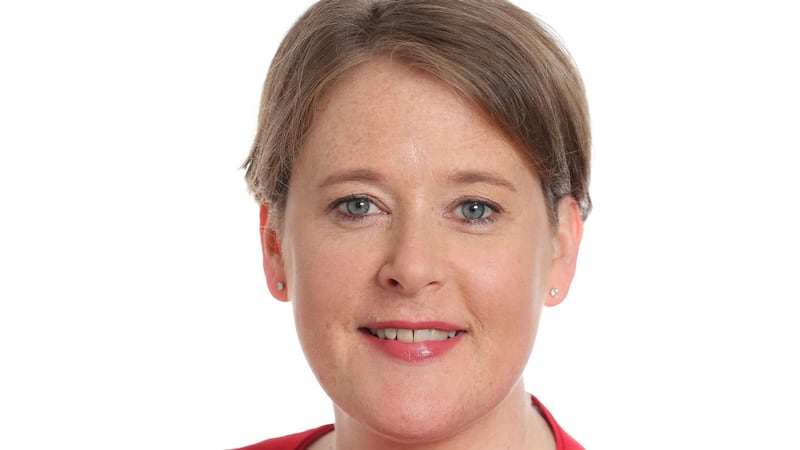
Keith Lowe, DNG
2019 has been a year of continued recovery albeit at a slower rate than 2018 with house prices holding steady for the year. Entry-level priced new and second-hand property has performed best with demand exceeding supply in all areas of the capital. Buyers here have been less concerned with the goings on in Westminster and more focussed on buying homes they can live in, with many leaving more expensive rental accommodation in favour of home ownership. The Government’s Help-to-Buy scheme remains an important incentive while the Central Bank’s fiscal rules – which require some relaxation – continue to control house price growth in the capital.
The rental market has continued to strengthen with 500,000 households now in rented accommodation as Government policy has favoured large-scale investors. Many tenants will soon realise that long-term renting is not a sensible or viable solution and once they reach retirement age many will discover that the State pension is not sufficient to cover the rent for even a modest home in the capital. This is a crisis in the making and Government policy should be more in favour of home ownership.
The top end of the market is more influenced by international sentiment, and Brexit uncertainty remains a significant concern. DNG has experienced a marked improvement in €1 million-plus sales in the last eight weeks, while there has been increased viewing and sales activity from new buyers in a period of the year when the opposite is normally the case.
Private Rented Sector (PRS) block buyers have purchased the majority of apartment schemes in the capital for the rental sector this year. This is negatively affecting the number of apartments on offer to buyers, especially those who would like to trade down from more expensive houses. There is little doubt that this trend will continue until the supply of rental units meets rental demand.
The number of new homes purchased in schemes by individual buyers in Ireland this year will be similar to that of 2018. However, the number in Dublin is likely to be significantly less because of the large number of PRS block sales which are taking up a significant percentage of the capital's supply.
2020 will be interesting as a new UK government unveils. This should provide final clarity on Brexit and ease uncertainty on this side of the Irish sea.

Marian Finnegan, Sherry Fitzgerald
As the end of yet another year approaches, it is disappointing that we seem no closer to resolving the national crisis that is the housing market. If anything, the crisis has deteriorated in the year.
Despite the strength of demand, overall transaction activity in the Irish residential market remained flat. The Property Price Register (PPR) reveals that there were about 23,800 single transactions in the opening half of 2019. This translates to a 2 per cent increase year-on-year, and a notable 0.3 per cent fall in Dublin.
Furthermore, the PPR reveals a reduction in the number of new homes sales of 1 per cent and an astonishing 18 per cent in Dublin in the opening six months of the year. Market insights suggest this slowdown is a result of problems arising from utility connection issues and in particular, but not exclusively, a backlog in connecting new properties to the water mains.
The stagnant sales environment in the second-hand market is largely explained by the tight mortgage market, which has limited access to credit.
Perhaps most worrying, however, is the performance of the lettings market, which remains the symbol of market dysfunctionality. Rents continue to rise rapidly and with the continued exodus of private landlords from the market, there is little hope this will abate soon. Budget 2020 was undoubtedly a missed opportunity to alleviate this acute crisis.
Despite considerable debate and discussion, we are still no closer to resolving the overall accommodation crisis. A persistent and deteriorating housing crisis will be very damaging in a post-Brexit environment, where migration will play an increasingly important role in contributing to economic growth.
Looking to the year ahead, in the context of the continuation of the macro-prudential policy rules in their current guise, we can expect a stable rather than expanding transaction base. The continuation of the Help-to-Buy scheme should underwrite new homes development, particularly in regional Ireland. However, the pace of increase in construction activity will inevitably disappoint without further interventions. Price inflation will remain largely stable, however rental inflation will remain elevated and volatile, unless we see a notable improvement in the supply of rental properties.

Pat Davitt, IPAV
The market has been very slow across the last two quarters. In Dublin generally, but especially in central Dublin and on the southside prices have cooled off. The question is, does the change mark the inevitable end of a rapid upward cycle or has Brexit impacted the particular dynamic? In my view the former is without doubt the answer, Brexit has long been priced in.
While the share market falls off and corrects itself all the time, when the property market behaves similarly it triggers fear and desperation. This is understandable given how personally invested people are in property, and homes in particular.
The Central Bank lending rules are a minor consideration for those on very high incomes. At another level they are encouraging the earlier-than-planned distribution or cashing-in of family inheritance to support home ownership.
However, for a huge cohort of aspiring buyers in the earnings bracket of up to €50,000, without the luxury of family support, the mortgage lending rules are a major impediment. They are paying rents that grossly exceed the cost of a mortgage. That is a market dysfunction which we as a society shouldn’t take lightly.
The extension of the Help-to-Buy incentive for a further two years was positive, but it should have been extended to second-hand homes, as IPAV proposed, to facilitate more movement in the market and making more properties available for different market needs.
Institutional investors or vulture funds have had a field day, not just enjoying extremely favourable tax treatment but being able to increase rents at will having been excluded from Rent Pressure Zones (RPZ) controls up to July 2019. This has caused huge increases in the rental market and indeed the property market as they continue to pay premium prices for whole developments for residential purposes.
Looking ahead to 2020, prices will rise where there is genuine value and yields. But it’s hard to find such value especially in the growing RPZ. Rents are all over the place and yields likewise and RPZ controls are negatively impacting property values, a factor that hasn’t reached public consciousness just yet. Private landlords are leaving the market. The RTB 2018 annual report revealed the number of tenancies registered by private landlords fell by nearly 6,000, or 1.8 per cent, to 307,348. This is a trend that will continue.

Johanna Gill, Society of Chartered Surveyors Ireland
From talking to chartered auctioneers and estate agents around the country this was a year of price realisation followed by price stabilisation and in some cases price reductions. In 2018, seller’s price expectations only became more realistic towards the end of the year, but that more pragmatic approach set the tone for 2019. It was helped by a very welcome, albeit modest, increase in the supply of new homes underpinned by the Help-to-Buy scheme, which was extended in Budget 2020. The increase in supply – together with the rise in the number of landlords leaving the private rental market – contributed to an increase in the number of house sales. However, the downside of this has been the dramatic and unsustainable increase in rents, especially in urban areas.
The biggest obstacle to progress this year was the lack of supply – especially in the more affordable €200,000-€300,000 range – and the availability of finance for buyers due to the caps on lending. Of course, there was no escaping the B word either and Brexit definitely cast a long shadow – not just in the Border region but also along the Atlantic coast from west Cork to Sligo. With many buyers playing a wait and see game there was a resultant drop off in queries and sales. Brexit fatigue has now set in and many people have just decided to move on. Dublin agents would now say it has been priced into the market and is no longer an issue.
Despite the clouds of uncertainty many of our members are forecasting stable prices for the year ahead. However, if Brexit is sorted early, that may give a much-needed boost to consumer sentiment and convince people who have deferred making decisions to return to the market in 2020. An increase in the value of sterling would also be a positive.
The hope is that any slowdown in the construction of new homes will be temporary as the key challenge remains of increasing the supply of new homes while finding better ways to get unused and underutilised stock back into the market. We believe the latter is key to rejuvenating and revitalising our local communities.

John McCartney, Savills
Last year I noted that strong construction growth and flattening demand were beginning to affect pricing. This continued in 2019. Building on previous increases, dwelling completions rose by a further 22 per cent over the last 12 months.
Not counted in this are 2,700 new student beds, 745 ghost estate units that have been finished, and 2,560 vacant properties (many previously uninhabitable) that have been brought back onstream. Including this “hidden supply”, the flow of additional units is now over 24,000 units per annum.
Regarding demand, Ireland’s population is still growing, but the pace of growth has stalled. Net inward migration actually fell in 2019 and, considering the trends of declining births and rising deaths, population growth may have reached its cycle high. Other factors sometimes claimed to be demand-drivers – shrinking households and obsolescence – are largely immaterial.
So supply has been ramping up and is higher than commonly appreciated. Meanwhile demand growth has flattened. In these circumstances it should not be surprising that house-price inflation (HPI) has eased back – the market is simply moving towards equilibrium.
I disagree with the consensus that binding mortgage rules have caused HPI to slow. Just look at the counterfactuals: in the midlands, the average house costs €182,000. Yet, although a couple on average earnings could borrow over €250,000 under Central Bank rules, HPI has fallen by two thirds in the last year. Also consider the fact that rent inflation has moderated from 11.3 per cent to 5.2 per cent. How are mortgage lending rules causing this?
The easing of inflationary pressure is simply too general – across tenure types and locations – to be explained by credit conditions. So another answer is required. And, for me, this lies in more evenly balanced supply/demand dynamics.
Supply will continue rising in the short run, further relieving inflationary pressure. But the most challenging base effects have now passed and I don’t expect Dublin prices to fall much more. Longer term, lower HPI expectations and rising development costs should lead to less rapid construction growth and underpin values.

David Cantwell, Hooke & MacDonald
2019 was a year of mixed fortunes for the new homes market. Sales were buoyant in the spring and summer, they stalled in the autumn but finished strongly towards the end of the year. One explanation for this is that first-time buyers were worried that the Help-to-Buy scheme might not be extended at year end so did most of their acquisitions in the earlier part of the year.
Sales of three- and four-bed houses in Dublin, Kildare, Meath and Wicklow were very busy. First-time buyers were most active followed by expanding families moving from smaller accommodation. The improved quality and energy efficiency of new homes is making them very attractive for purchasers compared to older properties.
There was a limited supply of apartments for sale, due mainly to the fact that the high cost of building apartments compared to achievable prices does not make many projects viable. Therefore the existence of institutional investors who are acquiring large-scale blocks and paying the required viable prices is facilitating the supply of apartments that would not otherwise have been constructed and is helping to moderate rental levels. They are not competing with owner occupiers.
There are obstacles in the way of supplying the build-to-sell market most of which revolve around the cost of construction, financial viability and funding. This needs to be addressed as apartments constitute a key element of what is required for good planning and higher densities in urban locations for an expanding population increasingly dominated by one-, two- and three-person households.
The outlook for the new homes market for 2020 is good except for the constraining factors of many aspiring first- and second-time buyers being unable to access finance and developers being unable to supply housing, particularly apartments at viable prices due to non-construction costs such as development levies, VAT, planning delays and site costs.

David Byrne, Lisney
2019 was a busy year in the Dublin residential market following what was a sluggish 2018 marked by a sentiment stand-off between buyers and sellers on their view of the market. Affordability for buyers had clearly become an issue across the city and in the latter half of 2018 and into 2019 the market corrected and prices adjusted. As prices adjusted buyers began to engage with the market again and activity increased.
During the first half of the year a significant increase in the supply of homes for sale across Dublin, most notably in the new homes market, eased supply/demand tension and prices generally remained static to the welcome relief of buyers.
Uncertainty around Brexit remained and not surprisingly peaked during the autumn selling season where some buyers decided to adopt a wait and see approach. Interestingly viewing levels and enquiries increased in late October and into November as buyers began to re-engage, accepting that once again Brexit would drift on.
Buyer sentiment at the upper end of the market seems most affected by Brexit, however in recent weeks there has been a noticeable increase in enquiries from UK-based buyers – mostly in the banking and legal sectors – who are citing employment as their reason for relocation to Dublin. These buyers are not immune to challenges in the property market as many are selling in a less buoyant London market. It will be interesting to see if this fuels increased upper-end activity in the new year.
In 2020 affordability will continue to be an issue and so properties will have to be priced to reflect market conditions. The early spring could see a burst of activity as buyers who had been adopting the wait and see approach during the autumn renew their vigour to purchase. This in turn should encourage homeowners who were reticent to place their property on the market in late 2018 to do so.
We expect price inflation to remain relatively static in 2020 with any likely growth to be in the region of 3-5 per cent.

Peter Kenny, Knight Frank
According to the Central Statistics Office property prices in Dublin fell by 0.3 per cent in the year to August 2019, with data showing price and activity weakness concentrated in Dublin at the upper-end of the market over €1 million. In Dún Laoghaire Rathdown – where average house prices are highest – prices fell by 6.1 per cent year-on-year, while prices in Fingal – where average house prices are lowest – there has been a 2.3 per cent increase in prices.
The market remains buoyant up to €750,000 thanks in part to first-time buyers with the Help-to-Buy scheme (HTB) which has recently been extended; but also due to exemptions allowed on borrowing by the Central Bank beyond the normal 3.5-times income. We have seen increased private investor take-up, particularly from international buyers attracted by strong yields, the stability of our economic and political system as well as the residency benefits offered by the Immigrant Investor Programme. Once we move from €750,000-plus, activity slows considerably, particularly above €2 million where Brexit uncertainty is weighing heavily on buyer sentiment.
However we are seeing Dublin at the forefront of the race for Brexit-related office moves. Reinforcing this is a noticeable lift in enquiries from the UK as businesses make more definite moves to relocate in order to more easily access the euro zone. Buyers from Asia in particular are making an appearance in the Irish market and we expect this trend to continue bringing with it considerable buying power to the middle and upper ends of the residential market .
The market for new homes is being driven by first-time buyers who comprise more than 50 per cent of mortgage drawdowns. In light of the Government’s HTB extension until 2021 (new homes only) Knight Frank New Homes would foresee this buyer profile becoming even more dominant within the new homes sector. The HTB scheme is driving demand for new properties up to €500,000. The story of 2019 will be the same as 2018 with approximately 75 per cent of sales agreed in the first six months of the year, with the remaining 25 per cent carried out over the following six months. This trend is likely to continue for 2020 and beyond.


















